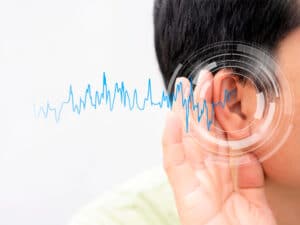Introduction:
Music Is Like A Dream. One That I Cannot Hear. In the vast expanse of human experience, few things evoke the same depth of emotion and connection as music. It has the power to transport us to different worlds, evoke memories long forgotten, and stir emotions we never knew we had. But for those who are unable to hear, music remains an elusive dream—a beautiful melody that they cannot fully experience with their ears. In this blog, we will delve into the profound relationship between music and hearing deafness, exploring how it can still be a source of inspiration, joy, and connection despite the absence of sound.
The Dream-Like Quality of Music
The Language of the Soul:
Music is often described as the language of the soul, a universal medium through which emotions are expressed and understood. For those hearing deafness, this language transcends the boundaries of sound, manifesting in vibrations felt through the body and visual interpretations of rhythm and melody.
Vibrations and Sensations:
While the deaf may not perceive sound in the traditional sense, they can still experience the physical sensations created by music’s vibrations. These vibrations can be felt through the body, resonating in the chest, fingertips, and even the soles of the feet, providing a visceral connection to the music.
Visual Interpretations:
For many hearing-impaired individuals, music takes on a visual quality, with movements, gestures, and facial expressions serving as a means of interpreting rhythm, melody, and emotion. Sign language interpreters play a crucial role in translating the lyrics and musical nuances into a visual language that resonates with the deaf community.
Imaginative Exploration:
Just as dreams unfold in the realm of the imagination, music invites the listener to embark on a journey of creative exploration. Deaf individuals can visualize the soundscape of a piece of music, imagining the soaring melodies, pulsating rhythms, and intricate harmonies in their mind’s eye.
The Challenges of Accessibility:
Despite the inherent beauty and universality of music, deaf individuals often face significant barriers to accessing and experiencing it fully. From limited accommodations at concerts and performances to a lack of representation and resources, there are numerous obstacles that must be addressed to ensure greater inclusivity and accessibility for all.
Beethoven’s Deafness: A Symphony of Resilience and Creativity
As I watch Clockwork Orange for the first time, the composition of Beethoven’s 9th symphony floods the theater with every note. I’m not sure if I’m more impressed by Stanley Kubrik and John Alcott’s collaboration of one of the most well renowned films of its time or by the less known fact that when Ludwig van Beethoven had finished this piece he was almost completely deaf.
The cause of Beethoven’s hearing loss is controversial at best. Such theories include Syphilis, Otosclerosis, Labyrinthitis, or even the possibility of lead poisoning. Evident from his personal memoirs, the first symptoms of hearing loss began as early as age 31 leading to a profound deafness by 44 years of age. Although his hearing impairment did not prevent him from composing music, complaints of tinnitus and progressive high pitch hearing loss spurred his frustration, isolation and depression followed by fits of rage.
With the use of ear trumpets and the numerous attempts to cure his hearing loss, Beethoven continued to compose mostly from memory, tactile vibration and pure adaptation. In fact, when reviewing his collection, it was said that as his hearing loss progressed he composed with a lower range of notes rather than the full range of frequencies from previous pieces. Any composition involving a range of higher notes undoubtedly came from his creative mind and imagination.
Conducting the premier of his infamous 9th symphony after a twelve-year sabbatical from performing, the musicians were instructed to ignore Ludwig’s direction and follow that of the co-director. Although he could not follow it himself, the seamless blend of music from his final classical masterpiece overwhelmed the audience with joy, gratitude and an everlasting impression on future works to come.
Now nearly two centuries later, Ludwig van Beethoven will always be remembered not for his hearing loss but for his talent, genius mind and his inspiring collection of music.

Conclusion:
In conclusion, music is indeed like a dream—a captivating and immersive experience that transcends the limitations of the physical world. For those hearing deafness, it may be a dream that they cannot hear, but it is one that they can still feel, see, and imagine in profound ways. As we continue to explore the transformative power of music, let us strive to create a more inclusive and accessible environment for all individuals to enjoy its beauty and wonder.
At Listen Hear Diagnostics, we are committed to enhancing the lives of individuals with hearing impairments through innovative diagnostic solutions and personalized care. Our team of experts is dedicated to providing comprehensive evaluations and tailored recommendations to ensure that every individual can experience the joy of music to its fullest extent. Visit our website today to learn more about our audiology hearing care services in New York and how we can support you on your journey to better hearing. Contact us today: (914) 902-8845








